The most frequent complaint of the patient is the change in appearance. This is produced above all by the retraction of the upper eyelid (it is more open), which gives the patient a frightened look. They also tend to have eye irritation, swollen eyes, especially in the mornings, protruding eyes and in the most serious cases, double vision or loss of vision. If this occurs in someone who already has known thyroid problems, the diagnosis is easy. The problem is that sometimes the eye abnormalities predate the thyroid abnormalities. These cases may require tests and imaging tests for diagnosis. It is very important to detect these cases early and refer them to the endocrinologist for thyroid treatment.
The treatment of thyroid orbitopathy depends on the stage of the patient. The active phase is treated with drugs, while the inactive phase (the sequelae) is treated with surgery. The initial drugs used in the active phase are intravenous corticosteroids. They are effective in up to about 80% of cases. When there is no response to corticosteroids, the two alternatives, depending on each case, are orbital radiotherapy, or biological drugs such as tocilizumab or rituximab.
Surgery for the sequelae can be performed when the disease is inactive, meaning when there is no longer inflammation. This typically occurs one or two years after the onset of eye involvement, although the timeline may vary based on risk factors (longer in smokers) and the response to medication such as corticosteroids or biological treatment(which can shorten the duration of the active phase).
Surgery can address all the sequelae associated with thyroid eye disease, including exophthalmos (with orbital decompression), double vision (with surgery on the eye muscles), and eyelid abnormalities. These abnormalities may include eyelids that are more open than normal, giving a startled appearance, or excess fat forming large bags (with eyelid surgery). In large European studies, surgery has been shown to significantly improve the quality of life in patients with thyroid eye disease.
Thyroid orbitopathy is an autoimmune disease, in which our defences attack our own thyroid, and the fat and muscles around our eyes. This attack causes inflammation (eyelids and eyes become swollen, red, painful) which usually lasts for about one to two years (longer in smokers). After this time, the inflammation disappears. The problem is that, depending on the intensity of the inflammation, it can leave from none to serious after-effects (especially exophthalmos or eyes that protrude outwards, strabismus and double vision, and eyelids that are more open and oily).
The main problem is that it tends to affect women more frequently and often young people, and as it affects the eyes and changes their appearance, it produces a great alteration in the quality of life, both because of the discomfort and the emotional alteration.
Orbital decompression consists of making the orbit larger, so that more content can fit in, and the eyes that have protruded because the content had increased in size, return inwards, towards their normal position. This is achieved by removing one or more of the walls of the orbit. The surgery is performed under general anaesthesia and the patient is usually admitted to hospital for 24 hours. It is a surgery that produces very satisfactory results with a small risk of complications. The main risk is the appearance or worsening of double vision, but if it does appear, it can be resolved.
Double vision surgery consists of repositioning the muscles that move the eyes to avoid double vision. It is usually performed with topical anaesthesia (in drops), which allows the position of the eyes to be adjusted much more precisely in the operating theatre.
Eyelid surgery can treat all the sequelae that appear on the eyelids. What is basically treated is eyelid retraction (when one or both eyelids remain more open than normal, with a startled look) and excess fat in the eyelids (which can be seen as bags, both in the lower and upper eyelids). There are different types of surgery and different techniques, but they are all performed under local anaesthesia and on an outpatient basis (without hospitalisation). It is very important in these cases to plan a completely individualised surgery for each patient in order to optimise the results.
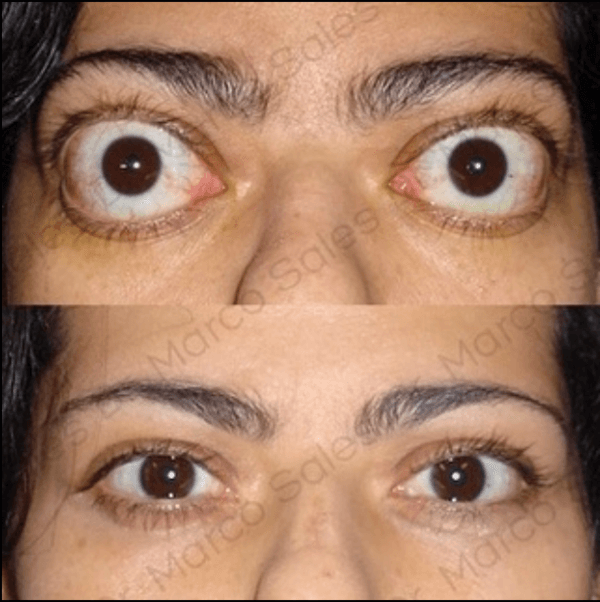


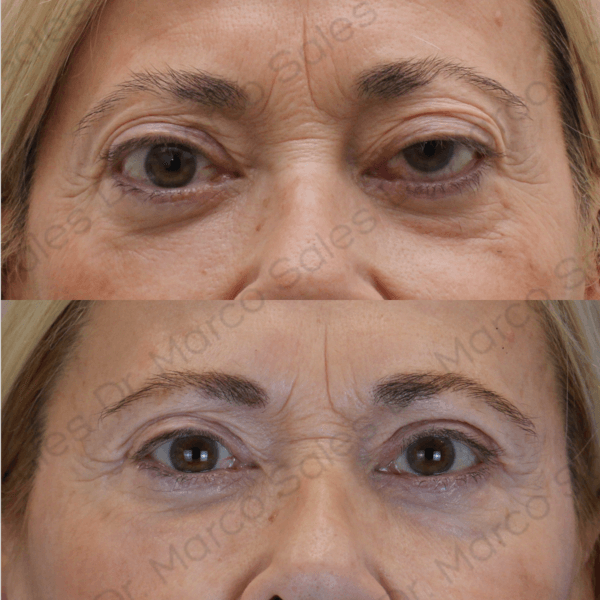

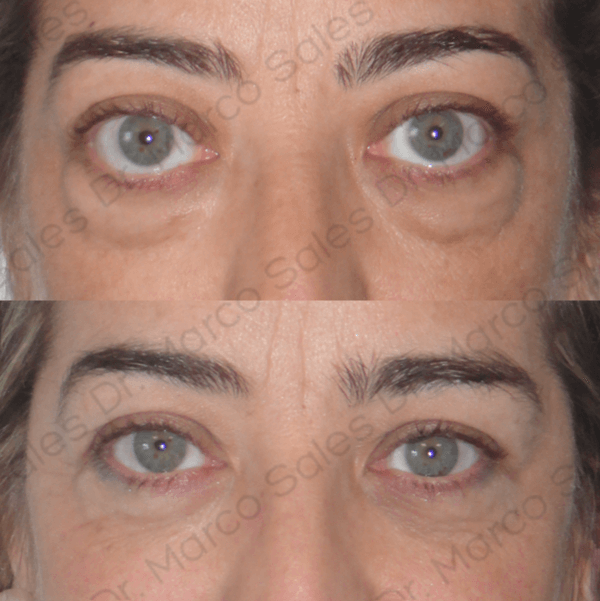
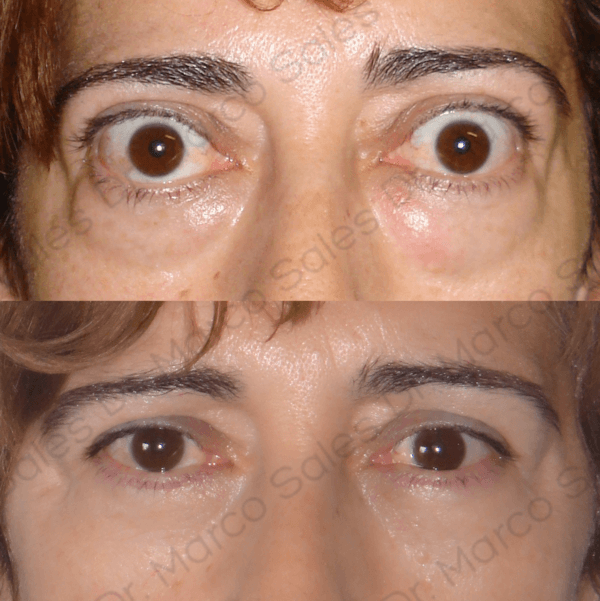

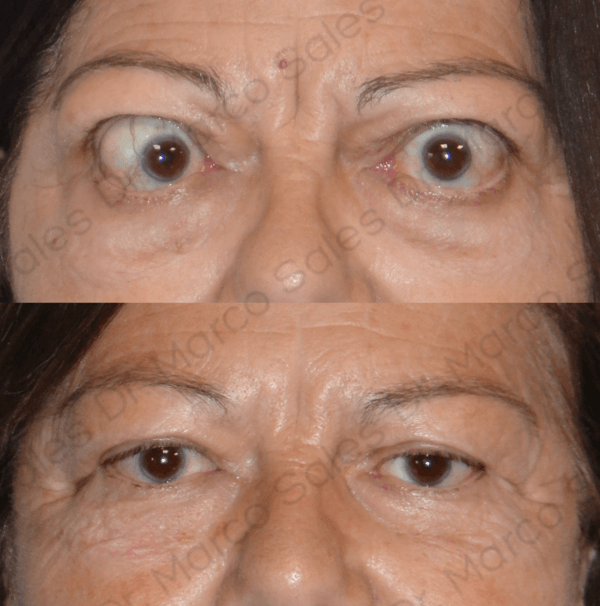
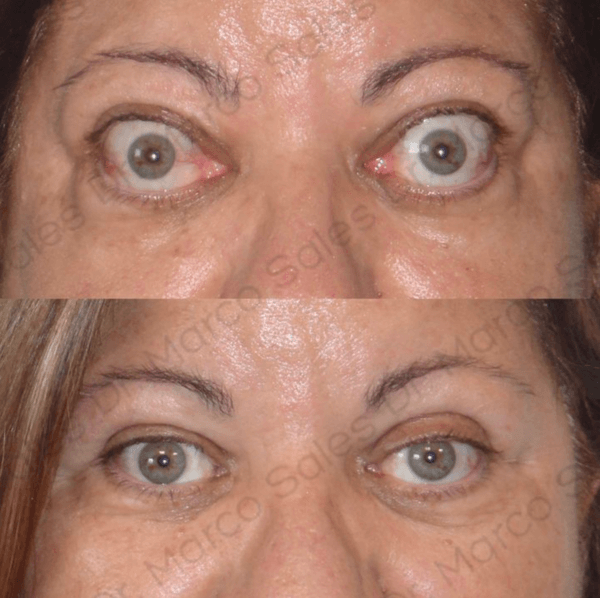
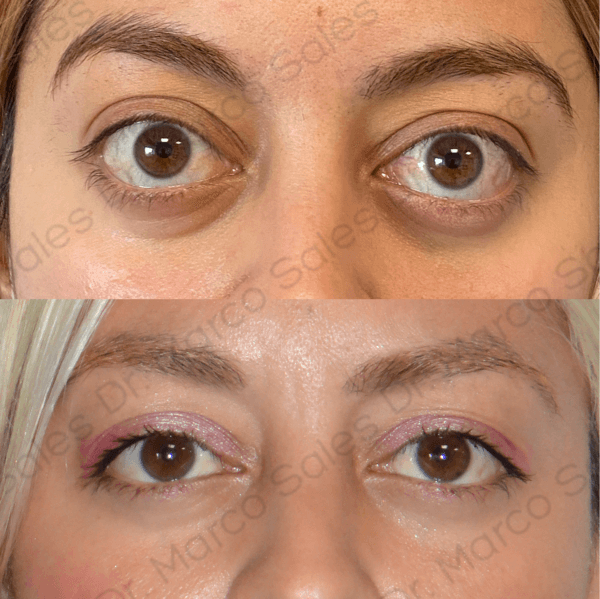

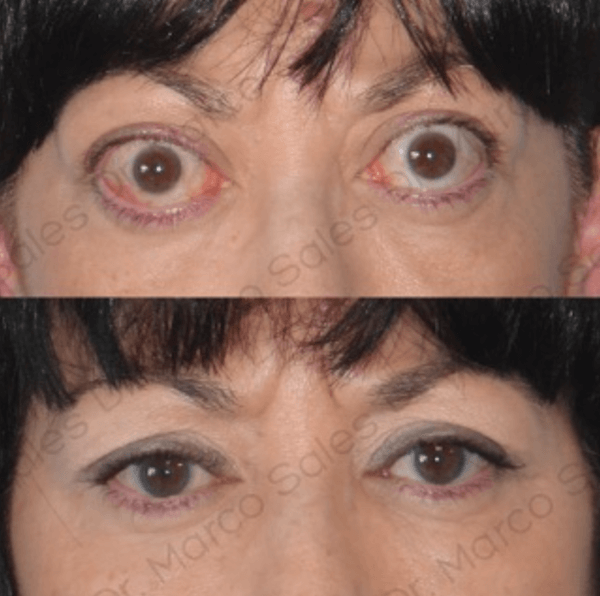


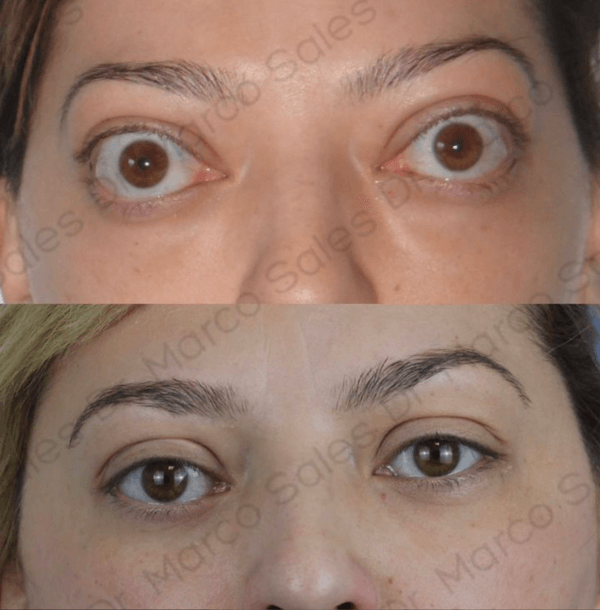

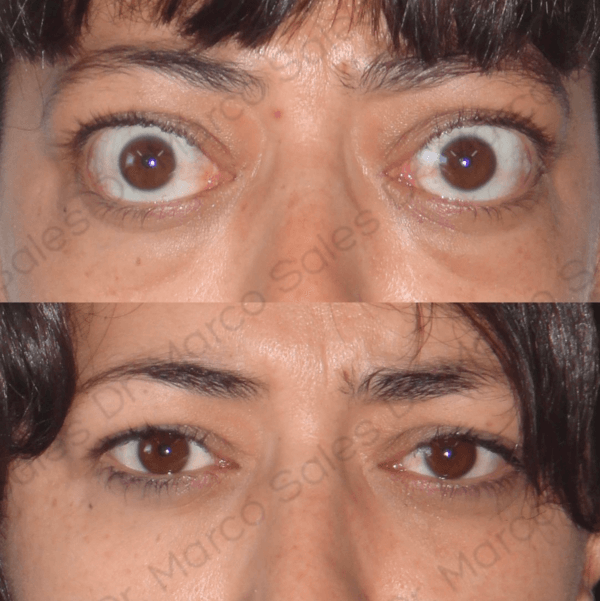

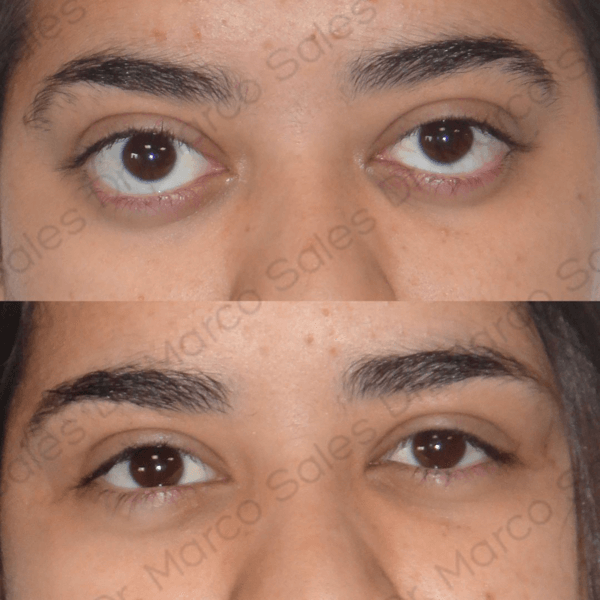
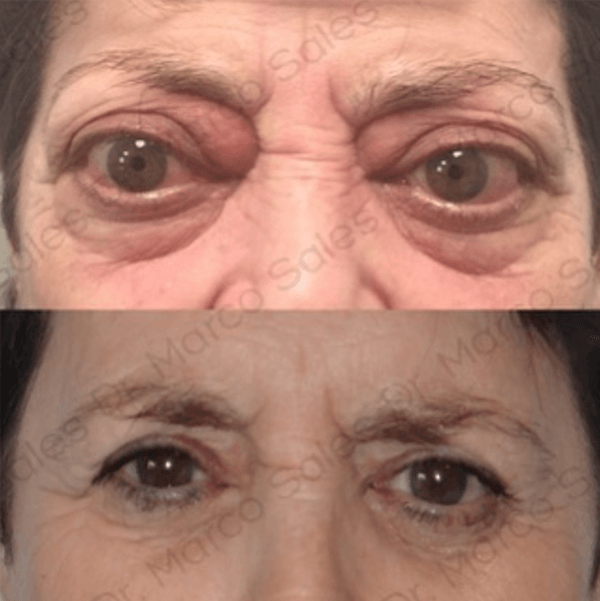
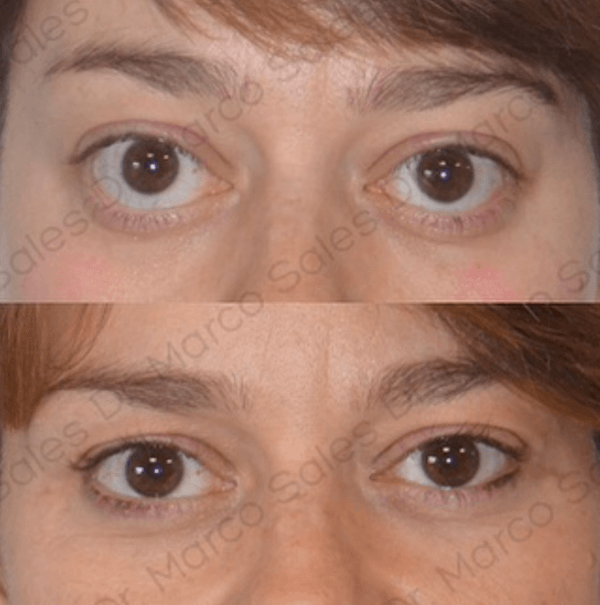
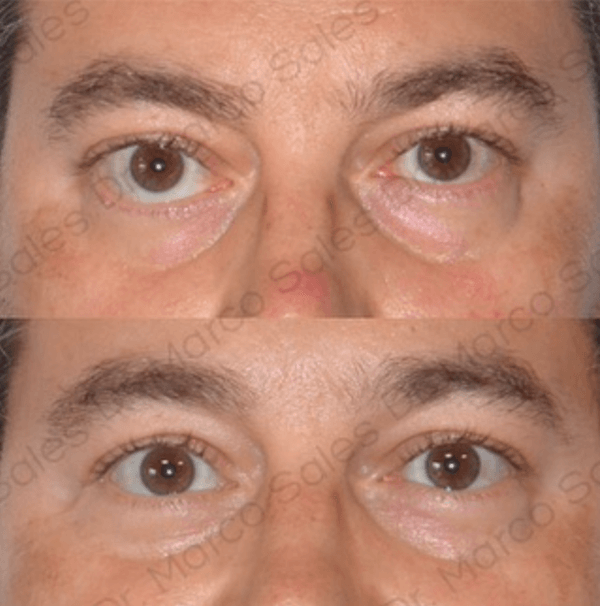
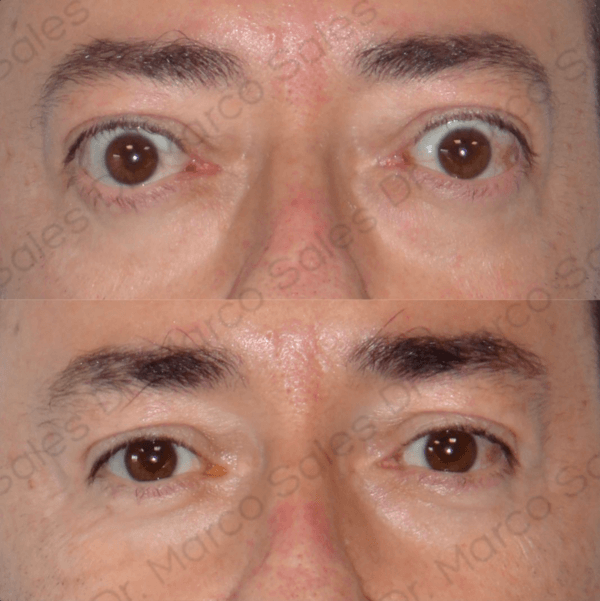

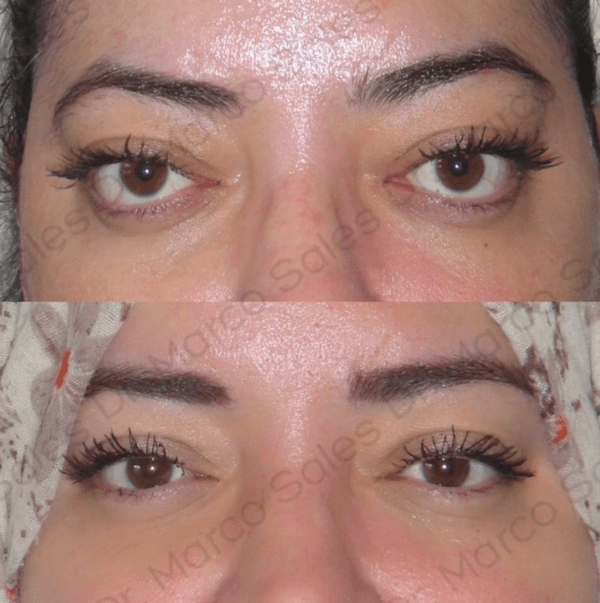
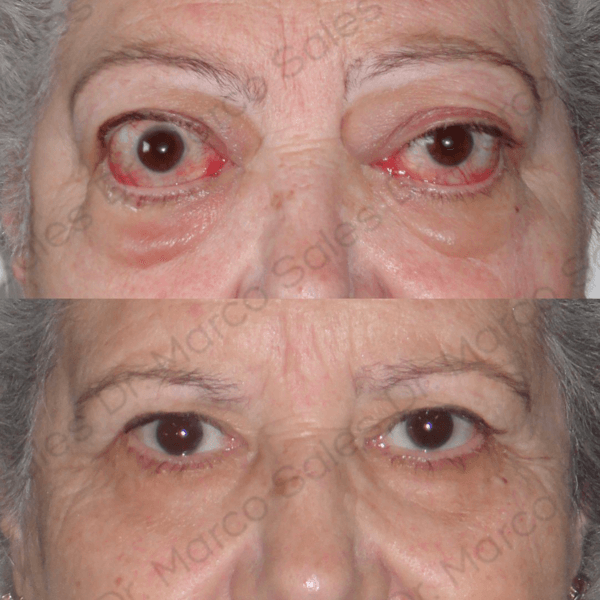

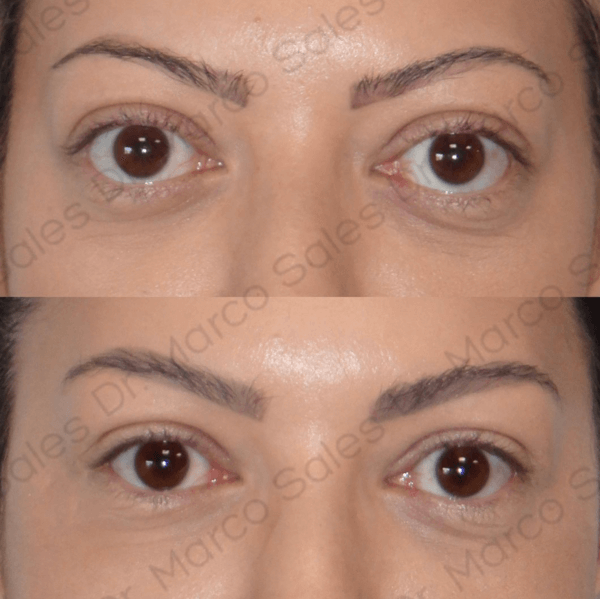
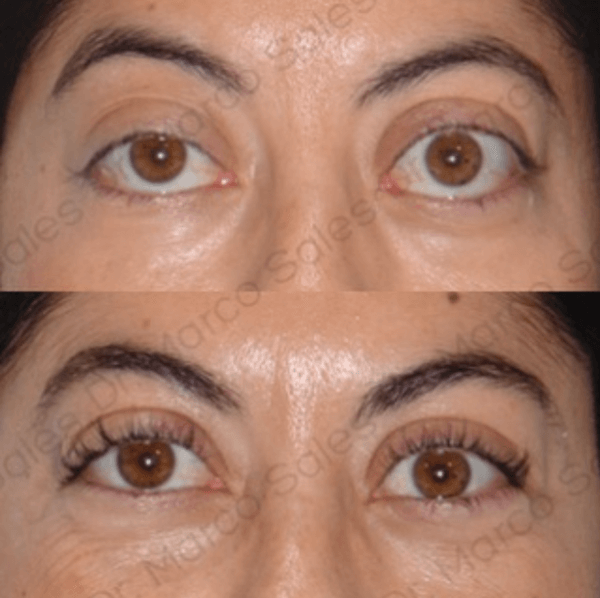
TV CHANNEL DR. MARCO SALES
Ver esta publicación en Instagram
¿Qué es la orbitopatía?
Ver esta publicación en Instagram
Cirugía rehabilitadora en orbitopatía tiroidea
Ver esta publicación en Instagram
Síntomas de una orbitopatía
CONTACT US
IMO Grupo Miranza Madrid
C/ del Valle Pinares Llanos, 3, 28305 Madrid
910 783 783

